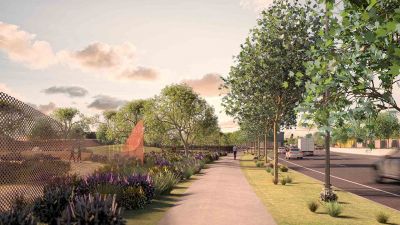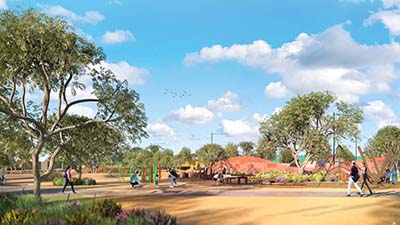Sustainability
Sustainable infrastructure is infrastructure that is designed, constructed and operated to optimise environmental and climate resilience, and social and economic outcomes over the entirety of its life cycle.
There are many factors that contribute to sustainability impacts and opportunities for this project, including its complexity and scale, the extended construction time period, the long-term operational activity and demand on resources.
- Summary
Download a summary of the Sustainability impact assessment in PDF format
Approach
Due to the size and scale of the T2D Project, a project-specific sustainability approach and assessment methodology has been adopted seeking to move beyond a 'business as usual' approach. The Department seeks to proactively identify and maximise opportunities to deliver positive environmental, social and economic outcomes. This will leave a larger, more positive legacy of sustainable and connected communities.
As part of this approach, a sustainability commitment and associated requirements have been developed incorporating impact and opportunity areas identified during the project’s planning phase.
This commitment will inform contract and procurement documentation and will increase positive outcomes by:
- fostering future-ready and resilient infrastructure and communities
- protecting and enhancing the local environment and communities
- integrating and embedding sustainability through developing measurable targets in project decision making and the supply chain.
The assessment of sustainability impacts and opportunities of the T2D Project was based on technical investigations that have been prepared as the project design evolved.
The key technical document to date for the project is the Planning Phase Sustainability Plan which has been prepared in accordance with the Department’s Sustainability Manual (SM), Master Specification (MS) and Transport Planning Investigations Frameworks. Due to the size and complexity of the project, a bespoke Sustainability MS has been developed which incorporates and builds on PC-ST1 – Sustainability in Design and PC-ST2 – Sustainability in Construction.
The technical investigations that relate to sustainability impacts and opportunities of the project that were considered by the Department in this assessment include:
- Planning Phase Sustainability Plan which outlines the approach to implementing sustainability through contract requirements and includes high-level greenhouse gas emissions estimates and circular economy assessment
- Preliminary Climate and Natural Hazard Risk Assessment
- Urban and Landscaping Design Plan
- Ground and Surface Water Strategy.
These technical investigations are summarised in the Impacts and mitigation measures section.
Impact and mitigation measures
The T2D Project will create both positive and negative environmental, social and economic outcomes in areas of the project due to its magnitude and complexity. Impact and opportunity areas were identified early in the planning phase and are presented below.
The sections following the table summarise the sustainability assessments completed for the key impact areas considered during Project Design, which provide the basis for development of sustainability initiatives and opportunities.
Key sustainability impacts and opportunities
| Impact area | Opportunity |
|---|---|
| Reducing operational energy use and construction material use impacts, considering quantities and types. |
| Reducing waste to landfill while increasing use of recycled materials. |
Climate change resilience
| Identifying relevant climate change and natural hazard risks and incorporating adaptation/mitigation measures. |
Greening and water-sensitive urban design (WSUD)
| Identifying and implementing green and water-sensitive urban design opportunities. |
Reducing potable water use
| Use of non-potable water sources and reducing tunnelling and operational irrigation water use quantities where practical. |
Social
| Providing local employment opportunities, and minimising community disruptions and impacts. |
| Including improved connectivity, land use uplift and enhanced public amenity. |
Greenhouse gas emissions
As part of the Planning Phase Sustainability Plan, high-level whole-of-life greenhouse gas (GHG) emissions associated with construction and operational material, and energy consumption have been estimated for the Project Design. From these estimates it is evident that materials used (embodied emissions and materials haulage) during construction are expected to be the most significant GHG emission source for the T2D Project.
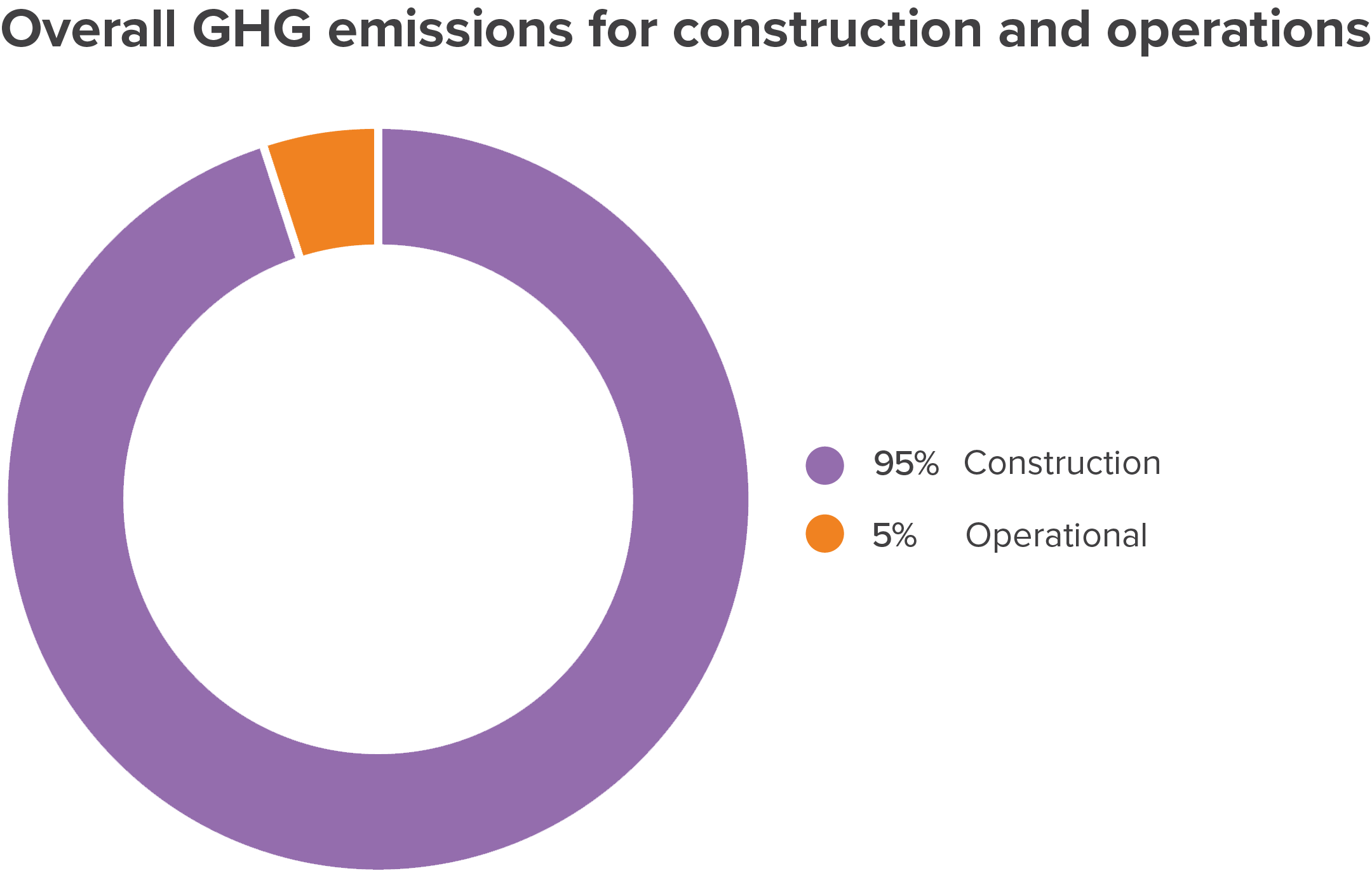
In calculating the T2D Project’s GHG emissions, an operational period of 50 years was adopted to ensure that ongoing GHG emissions over the whole of life of the project are appropriately accounted for. The main source of operational GHG emissions is anticipated to be generated from traffic flow within the project.
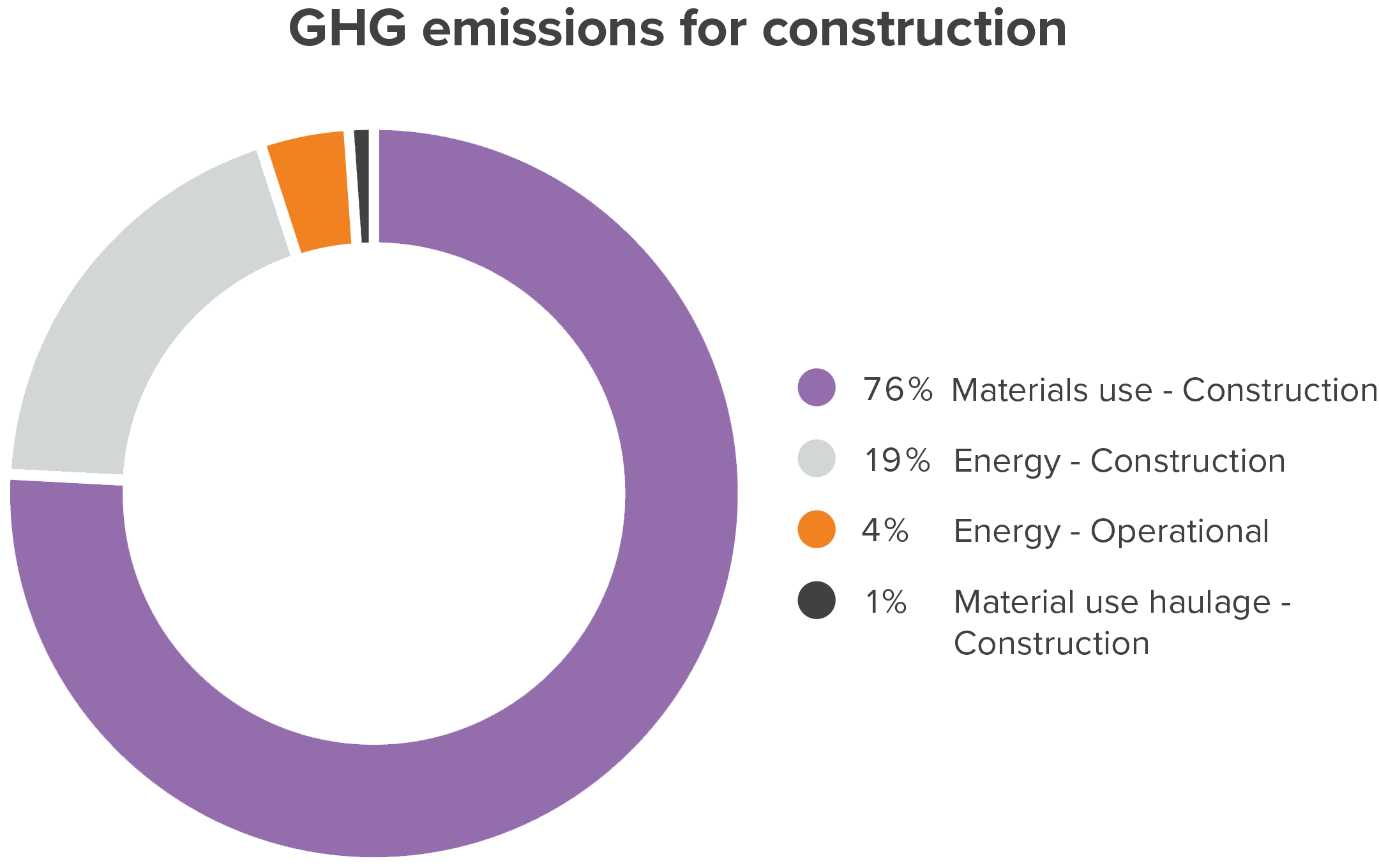
Further details on GHG emissions sources and estimates for the project are summarised below.
Energy usage
A range of energy uses during construction will contribute to the project’s GHG emissions. This includes operating the tunnel boring machines (TBMs) and construction plant, equipment and vehicles used for a range of works, including earthworks and piling and the use of on-site passenger vehicles. It is evident from the calculations, that utilisation of diesel for plant, equipment and vehicles is expected to generate greater GHG emissions than if electricity or cleaner forms of energy generation were used.
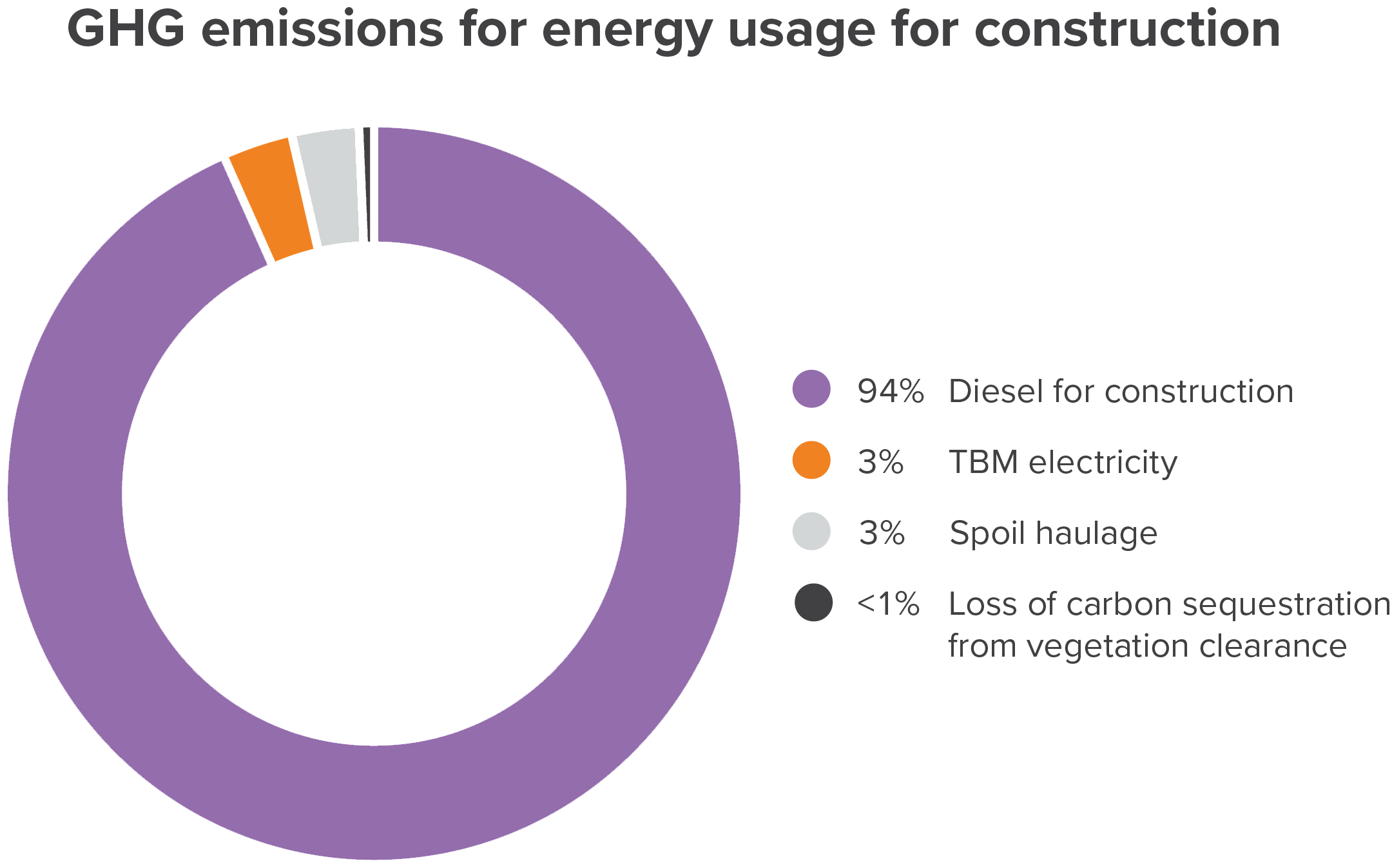
The project is also expected to have a significant demand for electricity during its operation. This is largely due to the operational requirements of the project’s tunnels, which include ventilation, lighting, traffic management, communication and safety systems. In addition to the tunnels’ operational energy demands, there will be significant lighting, signalling and safety requirements for surface roads and public realm/pedestrian areas.
Materials usage
The use of concrete is expected to be the most significant source of GHG emissions and environmental impacts during construction.
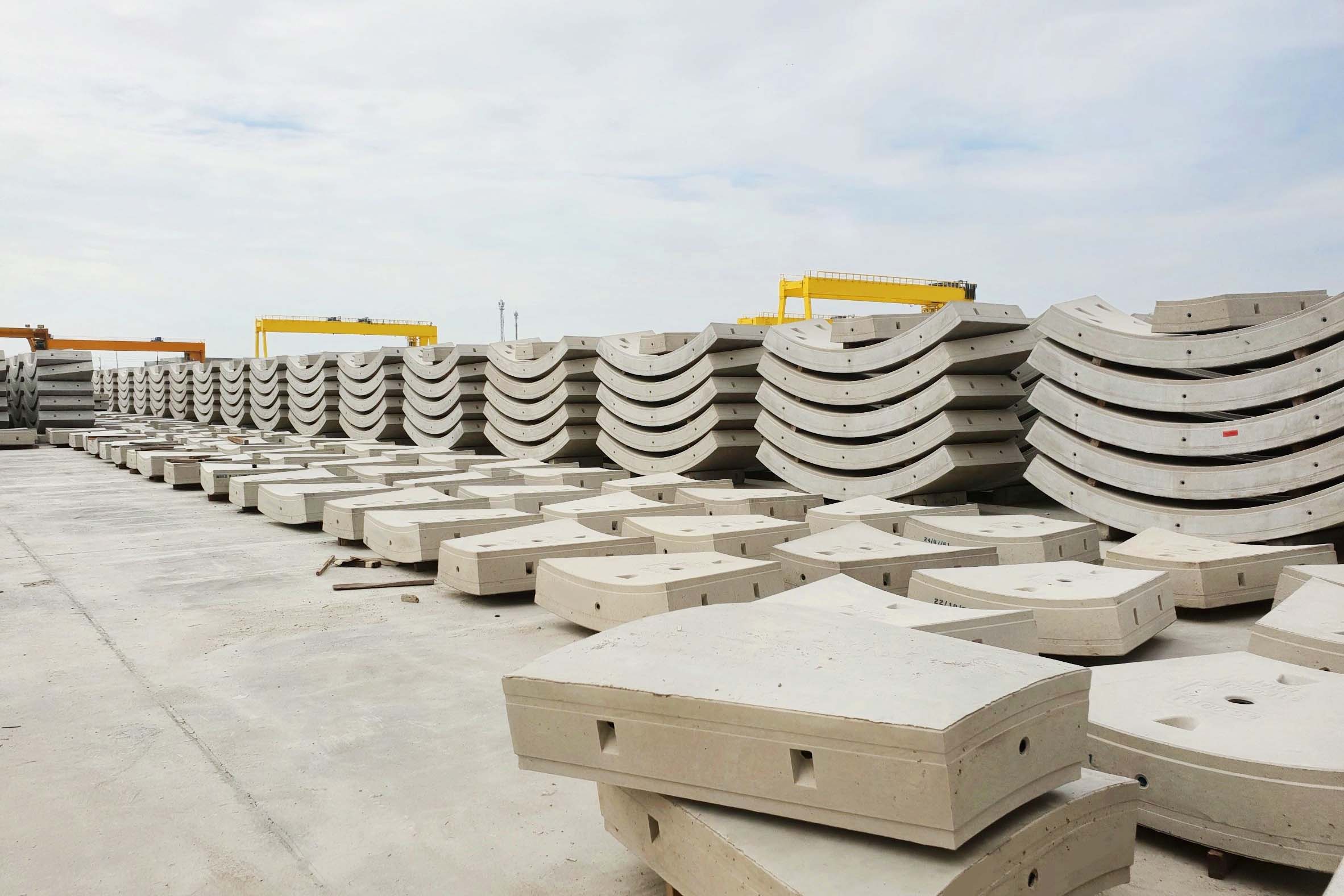
Photo: Pre-cast concrete tunnel segments
Other significant sources of GHG emissions include steel reinforcement, asphalt and bitumen.
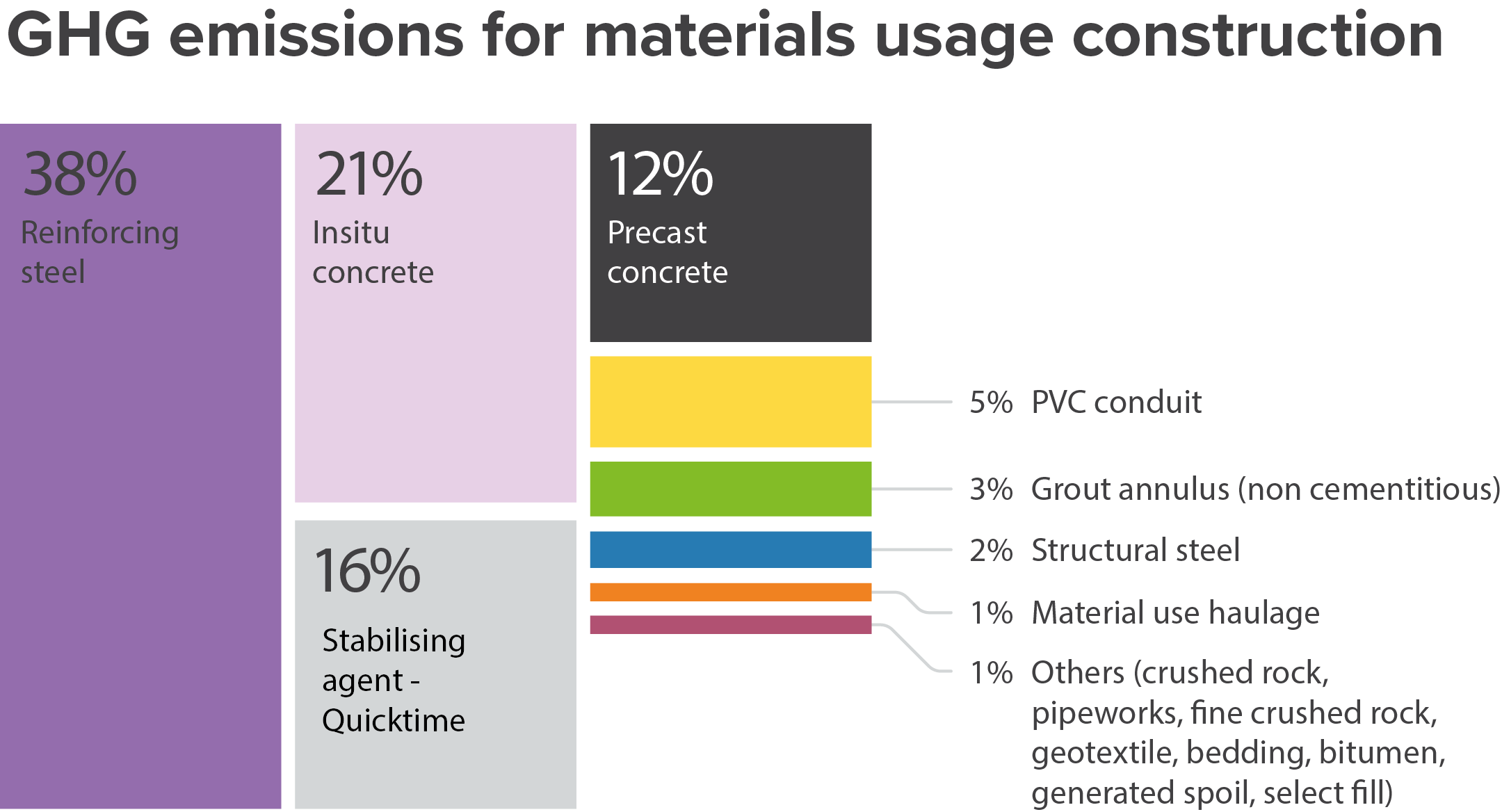
Graphic: Greenhouse gas emissions from materials usage for construction.
For the operations and maintenance phase, GHG emissions are expected to be significantly lower than those generated during construction, typically relating to rehabilitation of pavements, accessible drainage elements such as kerbing and replacement of tunnel mechanical systems.
Circular economy
The project will generate and consume significant volumes of resources during construction, operation and maintenance, including but not limited to spoil from tunnels, cleared vegetation, concrete, asphalt and steel.
As part of the Planning Phase Sustainability Plan, an initial circular economy assessment has been completed to identify opportunities to incorporate reused and/or recycled products/materials into the project and is summarised in the table below. The Contractor will be required to undertake further assessments and nominate targets during the procurement phase. It will be a requirement to achieve or exceed agreed targets during Detailed Design and construction.
Initial circular economy assessment
| Material | I/O | Circular economy opportunity area | Opportunity detail |
|---|---|---|---|
| Clean/inert excavation spoil | Output | Maximise offsite reuse of reusable resources. | Excavated spoil is being assessed for potential re-use for beneficial purposes along the alignment or off-site (former mine rehabilitation). |
| Office resource | Output | Maximise offsite reuse of reusable resources. | Resources generated by offices and kitchens taken to a resource recovery facility for reuse/recycling. |
| Other inert resource | Output | Maximise offsite reuse of reusable resources. | Resources generated by the project taken to a resource recovery facility for reuse/recycling. |
| Asphalt | Output | Maximise offsite reuse of reusable resources. | Asphalt planings to be recycled for use as Reclaimed Asphalt Pavement (RAP). |
| Input | Minimised use of new/raw materials/maximised use of resource inputs (materials) with recycled waste content. | Replacing new/raw material:
| |
| Road base materials | Output | Maximise offsite reuse of reusable resources. | Resources generated by the project taken to a resource recovery facility for reuse/recycling. |
| Input | Minimised use of virgin resources/maximised use of resource inputs (materials) with recycled waste content. | Replacing virgin material with recycled crushed concrete (with or without recycled crushed glass as supplementary material). | |
| Concrete | Output | Maximise offsite reuse of reusable resources. | Demolished concrete elements and waste concrete to be collected and processed into recycled crushed concrete for road base on future projects. |
| Input | Minimised use of virgin resources/maximised use of resource inputs (materials) with recycled waste content. | Replacing virgin material: | |
| Noise barriers | Input | Minimised use of virgin resources/maximised use of resource inputs (materials) with recycled waste content. | Replace typical concrete barriers with one of the following material types:
|
| Temporary noise barriers | Input | Minimised use of virgin resources/maximised use of resource inputs (materials) with recycled waste content. | Identify re-use opportunities for temporary barriers if not at end of life. |
| Acoustic sheds | Input | Maximise offsite reuse of reusable resources. | Repurpose materials used to build the temporary acoustic sheds at end of construction phase. |
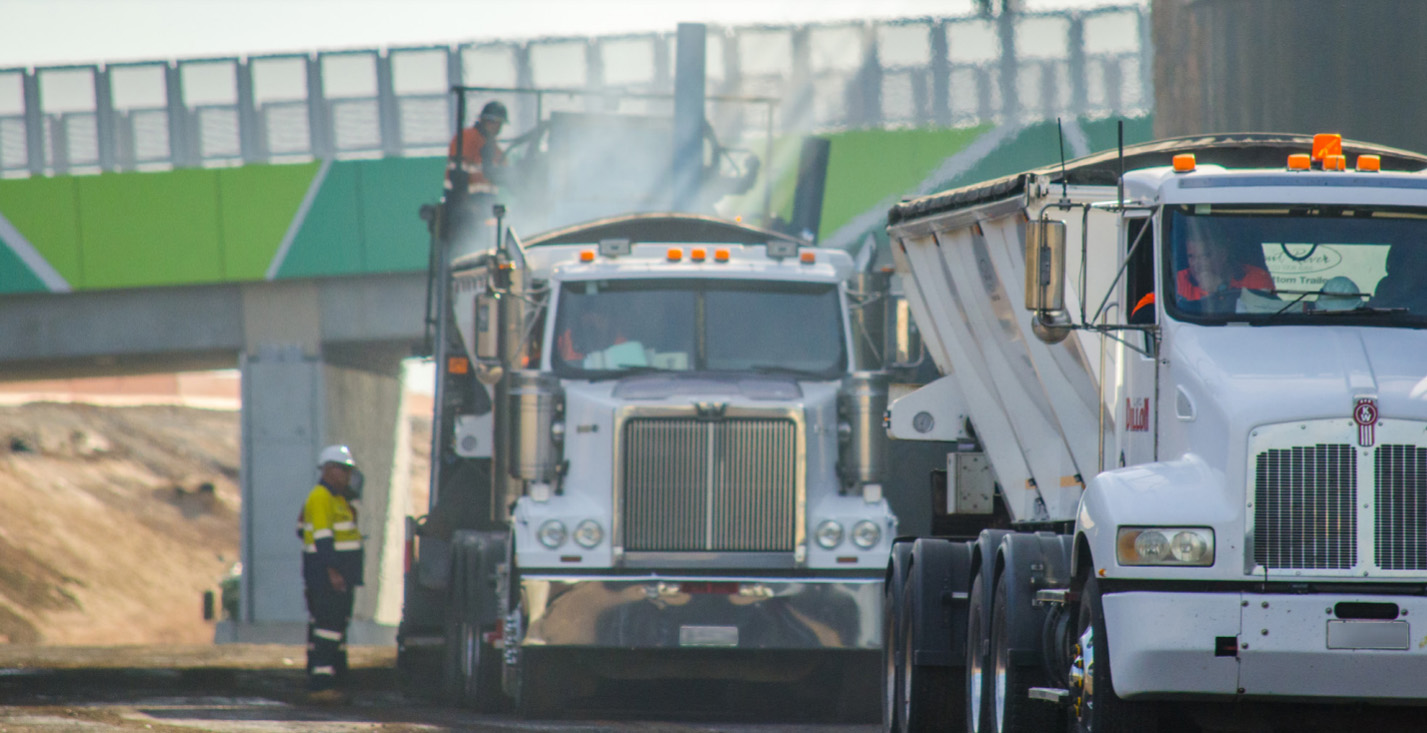
Photo: Trucks on-site, Darlington Upgrade.
Climate change resilience
A preliminary Climate and Natural Hazard Risk Assessment for the T2D Project has been completed which identified risks and how they can be addressed through adaptation measures - improving the resiliency of the asset. The scope of the risk assessment included the works associated with the design and construction of the project and considered the operational elements of the asset, such as tunnel ventilation, lighting and intelligent transport system (ITS), and maintenance activities. It also considered the interface of the asset with the broader road network and adjacent land uses.
Projections for future climate conditions and changes to natural hazards such as extreme rainfall events were primarily sourced from the Department for Environment and Water’s Guide to Climate Projections for Risk Assessment and Planning in South Australia. The risk assessment summarised the current projections for emissions scenarios Representative Concentration Pathway (RCP) 4.5 (low emissions) and 8.5 (high emissions). The risk assessment has primarily focused on risks in the years 2050 and 2090, as the overall asset design life is 100 years, with several components such as bridge structures and culverts having a specified 100-year design life.
A series of technical workshops were conducted to identify elements to be considered and to subsequently assess potential impacts, the risks they pose and appropriate adaptation measures necessary to reduce these risks.
Twelve priority risks were identified along with adaptation measures that need to be adopted which and are described in the table below.
Overview of priority climate and natural hazard risks and adaptation measures
| Climate impact | Asset element | Risk description | Proposed adaptation measures |
|---|---|---|---|
| Increase in maximum temperatures | Bridges | Material expansion leading to increased movement, accelerated degradation and reduced lifespan and resulting in inoperability. | Australian Standard 5100: Bridge Design and Assessment, specifies temperature by region. Recommended risk is reviewed further during Detailed Design where adaptation measures can be implemented to account for projected temperature change. |
| Increase in frequency of hot days and heatwaves and solar radiation | Pavement surfacing | Damage to pavement surface (softening of bituminous binder and related flushing, bleeding, rutting) requiring early maintenance, leading to loss of grip to surface. | Review current temperature in specification and update Detailed Design as appropriate. Future adaptation (15-20yr time horizon): Review temperature specifications at time of major pavement upgrade to account for measured changes in temperature and availability of new pavement technologies. |
| Accessible drainage, inaccessible drainage elements | Increased erosion and vegetation loss resulting in poor stormwater quality. | Consideration to be given to need for irrigation of landscaping with recycled water. | |
| Increase in frequency of extreme rainfall events | Pavement surfacing | Damage to pavement surface due to excessive surface water, erosion of surface, deposition of materials on surface and general damage due to ponding water. | Existing control includes climate change considerations through inclusion of flood modelling with projected changes to rainfall in pavement design. |
| Bridges | Damage and potential instability of structures due to unexpected scouring. | Review risk at Detailed Design in line with updated Master Specifications relevant to scour protection. | |
| Accessible drainage, causeways | Minor (regular) event - capacity is met more frequently, potentially causing service disruptions. | Existing control includes climate change considerations through inclusion of flood modelling with projected changes to rainfall. | |
| Accessible drainage | Major (flood) event in urban area – road could be overtopped, causing damage and service disruption. | Further analysis of flood impacts and review of risk profile required at Detailed Design stage. | |
| Accessible drainage | Major (flood) event in urban area- houses could be flooded. (Note lowered motorway sections will result in increased in afflux east of South Road). | Further analysis of flood impacts and review of risk profile required at Detailed Design. Consider provision of additional land bridges across lowered motorway to reduce water flow impacts. | |
| Pumping infrastructure | Pump capacity not designed to consider climate change impacts, which may result in flash flooding potentially causing damage and service disruptions. | Review required pump capacity on renewal in line with requirements at the time of replacement. | |
| Decrease in average rainfall and runoff, decreased soil moisture and increased droughts | Pavement surfacing | For areas of expansive clays - drop in moisture content (identified from geotechnical investigation and pavement design) resulting in deformation of road surface. | Pavement designed to prevent moisture/infiltration into subgrade, no additional climate change controls required. |
| Increase in flooding events and storms | Project wide | Loss of access or restricted access to the tunnel due to flood events impacting adjacent roads. | Adaptations embedded in existing controls to reduce flood impacts on the tunnel. Note: Due to relatively flat nature of surrounding area, if access to the tunnel is restricted, then the wider area would likely be affected (not limited to just the tunnel). |
| Sea-level rise | Accessible drainage, inaccessible drainage elements, causeways | Rising sea-levels could result in some backflow in the drainage network, reducing the stormwater discharge rate and quantity. | Risk to be reviewed at Detailed Design, noting project works are reliant on existing downstream infrastructure outside of the scope of the project. |
Climate change risks will continue to be assessed and reviewed throughout the Detailed Design and construction phases of the project.
Greening and water sensitive urban design
Without mitigation, the project would negatively impact vegetation, the existing urban tree canopy and create an increase in impermeable surfaces within the project boundaries. These effects can contribute to an increased urban heat island effect and adversely impact stormwater quality.
The Department has committed to identifying and pursuing feasible opportunities to expand green infrastructure (including water sensitive urban design) on new infrastructure projects through their Green Infrastructure Commitment. Specific targets include:
- a minimum 20% increase in canopy cover is achieved within the T2D Project area, or higher where possible
- a minimum 50% canopy cover is achieved over all pedestrian and cyclist paths, or higher where possible.
An Urban Design Strategy has been developed for the project, which sets out an overarching urban design vision, principles and objectives that apply project-wide to all works, including the requirement to achieve minimum tree canopy cover targets. These are supported by detailed design requirements for specific locations and project elements, including requirements for green spaces and landscaping in and around the motorway.
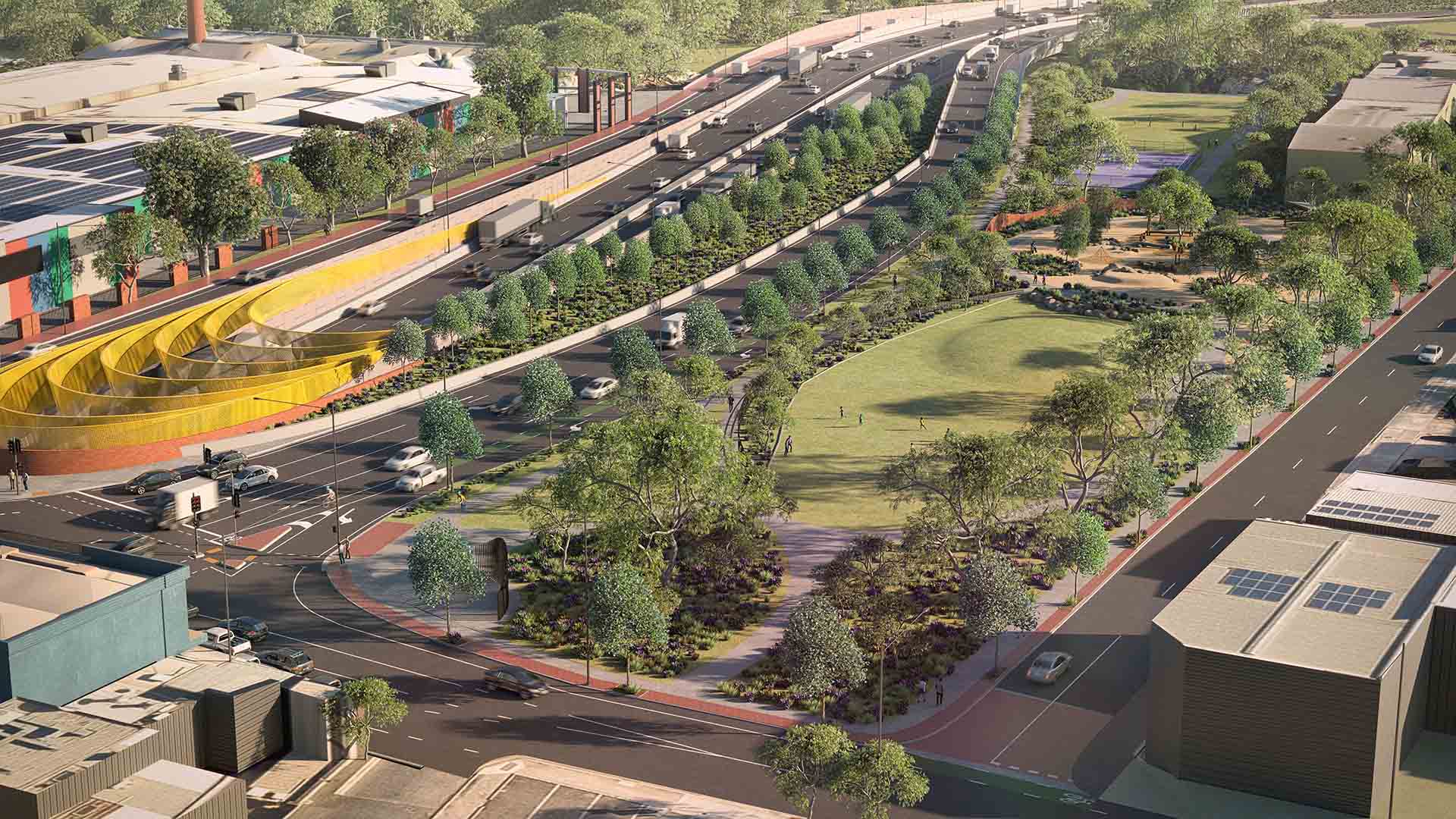
Artist's impression: Proposed greening near the Brickworks Marketplace.
During Detailed Design, a Green Infrastructure Assessment including development of a Green Infrastructure Concept Plan and a water quality risk assessment will be undertaken which will identify mitigation measures to reduce urban heat island impacts and improve stormwater quality.
See Landscape and visual amenity and Surface water.
Reducing potable water use
The water demands for the project during the construction phase are likely to be significant due to the equipment, including the TBM, that is used for tunnelling and excavation requiring large volumes of water to operate.
A Ground and Surface Water Strategy has been developed for the project covering assessment of potential options for the management of groundwater and surface water encountered within the portal cut-and-cover, lowered motorway sections and tunnel areas during the construction and operational phases of the project.
Significant operational water use demand includes landscape irrigation and water for tunnel systems, including fire suppression and wall washing.
Social
The T2D Project is located across a diverse range of highly urbanised areas with a mix of residential suburbs, light industrial and commercial areas. Existing residents, community service providers and users, social infrastructure (community and recreational facilities), and active transport routes are likely to be impacted during construction.
Impacts during construction could include changes in access, increased traffic and effects from general construction (including temporary changes to noise, vibration and dust levels) resulting in impacts on amenity.
To enable significant infrastructure such as the T2D Project to be constructed, the South Australian Government needs land on which to build and safely construct. The Project Design has endeavoured to minimise the amount of land required and the number of properties acquired by using tunnels for the majority of the project (approximately 60%), however some social and community impacts are expected, including temporary and permanent displacement.
Positive operational impacts include less road accidents, improved traffic connectivity and network efficiency to those living near (above the Northern and Southern Tunnels) and those travelling through the project corridor. This has potential to improve individual and social wellbeing and positive changes to community networks and community cohesion. Also a more connected and efficient road network and traffic conditions will have a positive effect on improved spatial accessibility and to businesses services and facilities, including community facilities.
There is potential to increase visual ‘hardscape’ from surface elements of the motorway and noise walls. The Urban Design Strategy and Landscape and Urban Design plan for the project address and aim to mitigate this impact.
See Social
Key sustainability opportunities
The greatest opportunities to reduce GHG emissions (carbon) across any infrastructure project are at the earlier stages of the project. As the detail and accuracy of the project’s design increases, the opportunities decrease and the cost of change increases. As a result, as a project moves through design phases and into Detailed Design, the ability to challenge, influence or alter the design solution reduces and the focus moves towards design optimisation (for example, pavement types or concrete mix designs).
In an effort to provide early design guidance, initiatives which address the key impacts and opportunities were identified early in the planning phase. They were either considered during the Project Design or will be as the design and construction processes progress. Initiatives and opportunities with potential for a high magnitude impact are summarised in the table below.
Key sustainability initiatives/opportunities across impact areas
| Key impact area | Design element | Sustainability opportunities |
|---|---|---|
| Greenhouse gas emissions | Tunnel ventilation system | Design for tunnel ventilation system to prioritise energy efficiency. |
| Tunnel lighting | Optimise lighting design for energy efficiency. | |
| Tunnel and surface road alignment | Optimise horizontal and vertical alignment to minimise distance travelled and engine load of vehicles (particularly those used for freight) operating on the alignment. | |
| Tunnel cross section | Optimise tunnel cross-section (length and shape) to minimise construction requirements (diesel fuel and electricity use, and quantities of concrete, steel and spoil). | |
| Concrete elements | Minimise Portland cement content in project-wide concrete uses. | |
| Steel elements | Minimise project-wide steel quantities. | |
| Tunnel pavements | Minimise whole-of-life embodied emissions for tunnel pavements. | |
| Flexible pavements | Minimise whole-of-life embodied emissions for flexible pavements. | |
| Construction/haulage vehicles | Opportunity to use low emissions vehicles in place of diesel-fuelled vehicles. | |
| Vehicles on the road | Investigate project-related opportunities to incentivise uptake of electric vehicles (such as travel-time benefits for electric vehicle users and inclusion of charging stations). | |
| Circular economy | Project-wide materials | Maximise diversion of waste from landfill. |
| Efficient water use | Tunnel boring machines (TBMs) | Minimise potable water use, including substitution of potable water. |
| Landscape irrigation | Efficient use of water, including substitution of potable water. | |
| Climate change resilience | Whole-of-project assets | Incorporate climate change and natural hazard adaptation measures. |
| Greening and water sensitive urban design | Greening | Increase green canopy cover, inclduing at least 20% increase in canopy cover with 50% canopy cover over all pedestrian and cyclist paths. |
| Water sensitive urban design | Incorporate water sensitive urban design outcomes. | |
| Social | Social infrastructure and community facilities, local businesses | Opportunities to support local businesses and local employment during construction. Opportunities to embed social procurement frameworks into construction, operations and maintenance. |
| Urban Renewal | Urban design and city shaping | Create walkable, connected neighbourhoods, drive increased use of public transport through delivery of services that are more efficient, integrated and customer-focused and reduce the need for car journeys. Improved public amenity. |
Key sustainability outcomes already achieved through the Project Design include:
- the use of tunnels across about 60% of the length of the project , reducing surface level impacts on existing trees and vegetation within the corridor
- the proposed ventilation system significantly reduces operational energy demand for the project
- design has aimed to minimise impacts to social infrastructure and community facilities, such as health centres and schools
- use of passive shading elements to provide a natural light transition at tunnel portals
- the motorway design has been slightly re-aligned to the east in the vicinity of to the Brickworks Marketplace, with less impact on community open space/green space at Kings Reserve, and reduced amenity impacts
- revegetation to support enhancement of local ecology and increased canopy cover
- continuity of the shared-use path (SUP) along the length of the corridor, including connections to existing networks, such as the SUP along the River Torrens / Karrawirra Parri linear park and Western Bikeway
- stormwater basins integrated within the landscape design.
Construction
Key initiatives and opportunities identified for further assessment and implementing as delivery progresses include, but are not limited to, the following:
- reduction in whole-of-life GHG emissions and increased recycled content for concrete, pavements, steel reinforcement and noise barriers
- replacing a portion of the construction plant, equipment and/or vehicles which are typically diesel-powered, with electric, hybrid or renewable energy-powered alternatives
- investigation into onsite generation, storage and use of renewable energy
- efficient use of water during construction, including implementing initiatives to reduce water demand, onsite capture and reuse, and use of non-potable water sources.
Operation
Key initiatives and opportunities to be investigated for operations include, but are not limited to, the following:
- tunnel ventilation system design to use much less energy over time
- lighting design optimisation
- onsite generation, storage and use of renewable energy
- efficient use of water during operation of the project, including implementing initiatives to reduce water demand, onsite capture and reuse, and use of non-potable water sources.
Maintenance
Key initiatives and opportunities to be investigated for maintenance include, but are not limited to, the following:
- use of hybrid and electric maintenance vehicles
- beneficial re-use of groundwater from tunnels
- use of recycled materials for pavement resurfacing
- maintaining green infrastructure targets, including increase in 20% tree canopy cover and planting a minimum of 50% local native species.
Approvals
Approvals, permits and authorisations
A summary of key legislation, policies and guidelines covering sustainability, including an overview of each and their relevance to the project is provided in the table below. Depending on the final sustainability initiatives adopted for implementation as part of the project, approvals, permits or authorisations may be required. For example, if the use of recycled water during construction is implemented, relevant approvals from local councils, SA Water and SA Health may be required.
Key legislation, policies and guidelines
| Legislation/Policy | Overview | Relevance |
|---|---|---|
External | ||
| National Greenhouse and Energy Reporting Act 2007 (Cth) | National framework for corporations to report on emissions. Annual threshold values are specified for both facilities and corporations – emissions must be reported if estimated emissions exceed any of the thresholds. | Contractors engaged to construct the project and the future operator are likely to exceed these thresholds and be required to report their Scope 1 and Scope 2 greenhouse gas emissions and energy use. No specific approval required. |
| National Greenhouse and Energy Reporting (Measurement) Determination 2008 (Cth) | Provides methods for quantifying emissions from production and consumption of energy by a facility, and from operation of the facility. | Designers, contractors and operators will use these methods to quantify project energy-use emissions. No specific approval required. |
| The 30-Year Plan for Greater Adelaide | Guides the long-term growth of the city and its surrounds to become more liveable, competitive and sustainable. | Delivery of the project should align with The Plan’s targets and policies that address a broad range of environmental, social and economic outcomes. No specific approval required. |
| Directions for a Climate Smart South Australia | Sets the pathway for climate-smart planning and action across the SA Government, driving progress towards state-wide goals of reducing GHG emissions by more than 50% by 2030 and achieving net zero emissions by 2050. | Delivery of the project should align with the nominated goals. No specific approval required. |
| South Australian Government Climate Change Actions | Describes government-led objectives and 68 actions to build a strong, climate-smart economy, reduce GHG emissions and support South Australia to adapt to a changing climate. | Delivery of the project should align with The Action Plan’s objectives. No specific approval required. |
| South Australia’s Waste Strategy 2020-2025 | Forms a framework of policies, strategies and plans to meet SA’s priorities for economic growth, including circular economy targets. | Delivery of the project should align with The Strategy’s objectives and targets. No specific approval required. |
Internal | ||
| The Department’s Climate Change Adaptation Guideline | Provides guidance on undertaking a climate change risk assessment for the Department’s assets, services and operations, increasing the resilience of the infrastructure network to climate-related shocks and stresses to maintain service delivery. | Demonstrate compliance. No specific approval required. |
| The Department’s Sustainability Manual | Outlines the framework and tools for sustainable decision making and describes specific requirements for investigating and implementing initiatives to improve the sustainability of assets during the planning, design, construction and maintenance phases. | Demonstrate compliance. No specific approval required. |
| The Department’s Green Infrastructure Commitment | Outlines the Department’s commitment to identifying and pursuing feasible opportunities to expand green infrastructure (including water sensitive urban design) on public land, focusing on priority areas identified by Green Adelaide, corridors which provide for active travel, and new infrastructure projects. | Demonstrate compliance. No specific approval required. |
| Provides guidance on assessing the impacts on water quality and aquatic environments from the construction, operation and maintenance of transport infrastructure. It also provides a guide to WSUD principles for planners, designers, construction managers and asset managers. | Demonstrate compliance. No specific approval required. | |
| The Department’s Climate Change Actions Implementation Schedule | Provides details on the Department’s climate change actions and key deliverables, milestones and completion dates. | Demonstrate compliance. No specific approval required. |
Next steps
The Project Assessment Report (PAR) community consultation period concluded in April 2024. We thank you for your feedback.
The valuable information and local insights received during the consultation phase of the PAR are being considered by the project team and will inform the ongoing refinement of the T2D Project.







